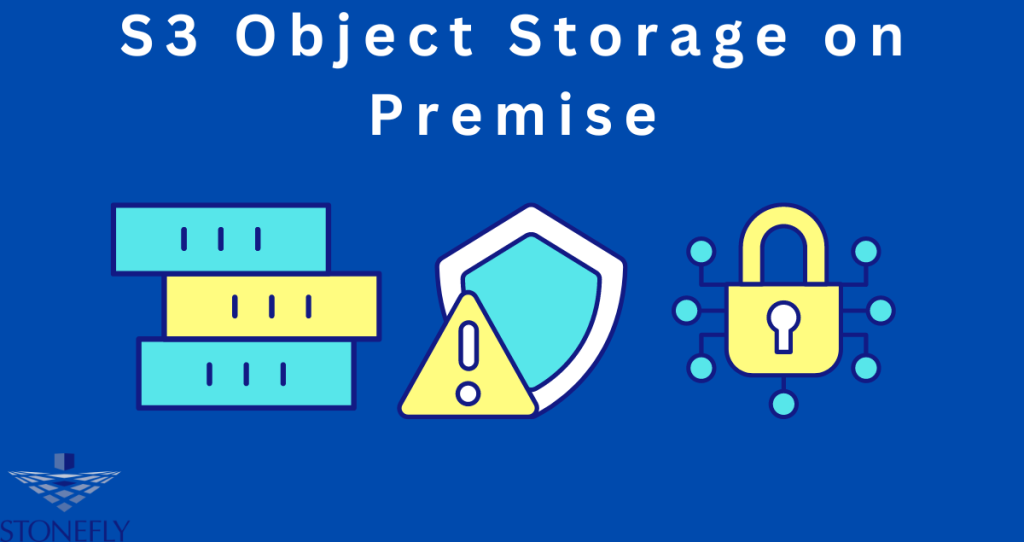The Benefits of S3 Object Storage On-Premise
5 min read
The Benefits of S3 Object Storage On-Premise
In today’s data-driven world, effective storage solutions are paramount for both businesses and development projects. While cloud storage has gained immense popularity, there are critical scenarios where on-premise object storage becomes indispensable. This post delves into the benefits of implementing S3 Object Storage on-Premise, offering insights into why it is a vital consideration for professionals and developers alike.
Understanding the Basics of S3 Object Storage
Before exploring the advantages, it’s essential to understand what S3 object storage entails. S3 stands for Simple Storage Service, a form of object storage designed to store, manage, and retrieve vast amounts of unstructured data. Unlike traditional file storage systems, object storage uses a flat structure with unique identifiers (keys) for each object, making it highly scalable and efficient for large datasets.
Key characteristics of S3 object storage include:
- Scalability: Capable of handling petabytes of data without compromising performance.
- Durability: Data is stored across multiple devices, ensuring redundancy and data integrity.
- Accessibility: Objects can be accessed via standard APIs, making integration with applications straightforward.
Benefits of S3 Object Storage On-Premise in Comparison to Other Storage Solutions
Security and Compliance
One of the primary benefits of on-premise S3 object storage is enhanced security and compliance. Data stored on-site remains within the organization’s control, adhering to stringent data privacy regulations and security protocols, which is often a requirement in industries such as finance and healthcare.
Cost Efficiency
On-premise solutions can offer significant cost savings over time, especially for organizations with large data storage needs. By leveraging existing infrastructure and avoiding ongoing cloud subscription fees, businesses can achieve a more predictable and controlled expenditure.
Performance and Latency
For applications requiring low latency and high performance, on-premise S3 object storage is an optimal choice. Proximity to the data source ensures faster data access and processing times, which is crucial for real-time analytics and mission-critical applications.
Customization and Control
On-premise storage allows for greater customization and control. Organizations can tailor their storage environments to meet specific needs, from hardware configurations to software optimizations, ensuring that the storage solution aligns perfectly with operational requirements.
Offline Accessibility
In environments with intermittent or unreliable internet connectivity, on-premise storage provides a reliable alternative. Ensuring continuous access to data and reducing dependency on external networks can be a significant advantage for remote locations or industrial settings.
Real-world Use Cases Illustrating the Value of On-Premise S3 Object Storage
Media and Entertainment
In the media industry, large volumes of video, audio, and image files require efficient storage and rapid retrieval. On-premise S3 object storage supports high-speed editing and production workflows, enabling creative teams to work seamlessly without latency issues.
Healthcare and Life Sciences
Healthcare institutions handle sensitive patient data that must comply with strict regulatory standards. On-premise object storage ensures that this data is stored securely and can be accessed quickly by medical professionals, improving patient care and operational efficiency.
Financial Services
Financial institutions deal with massive amounts of transactional data that must be Stored securely and retrieved rapidly for analysis. On-premise S3 storage solutions offer the scalability and durability required to manage this data effectively while ensuring compliance with industry regulations.
Research and Development
For research organizations, data integrity and accessibility are critical. On-premise S3 object storage supports the storage of large datasets, enabling researchers to perform complex analyses and simulations without worrying about data loss or latency.
Best Practices for Implementing and Managing On-Premise S3 Object Storage
Assess Your Storage Needs
Begin by evaluating your current and future storage requirements. Consider factors such as data growth rates, access patterns, and specific performance needs to ensure your on-premise solution can scale accordingly.
Choose the Right Hardware
Selecting the appropriate hardware is crucial for achieving optimal performance and reliability. Invest in robust storage servers with high-capacity drives, redundant power supplies, and network interfaces that can handle large volumes of data.
Implement Data Redundancy
Data redundancy is essential to ensure durability and availability. Employ replication and erasure coding strategies to protect against hardware failures and data corruption, ensuring that your data remains intact and accessible.
Optimize for Performance
Optimize your storage environment by configuring network settings, caching mechanisms, and storage tiers. Regularly monitor performance metrics to identify and address bottlenecks, ensuring that your system performs optimally under varying loads.
Secure Your Data
Implement stringent security measures to protect your data from unauthorized access and breaches. Use encryption, access controls, and regular security audits to maintain the integrity and confidentiality of your stored data.
Plan for Maintenance and Upgrades
Regular maintenance and timely upgrades are essential for the long-term health of your storage infrastructure. Develop a comprehensive maintenance plan that includes hardware inspections, software updates, and capacity planning.
Conclusion:
As businesses continue to grapple with the challenges of data management, on-premise S3 object storage stands out as a viable and valuable solution. Its benefits in terms of security, cost-efficiency, performance, and control make it an attractive option for professionals and developers seeking to optimize their storage environments.
Looking ahead, the role of on-premise object storage is set to evolve further, with advancements in storage technologies and integration capabilities enhancing its appeal. By staying informed and adopting best practices, organizations can leverage the full potential of on-premise S3 object storage to drive innovation, efficiency, and growth in the digital age.
Are you ready to explore the benefits of on-premise S3 object storage for your organization? Start by assessing your storage needs and developing a strategic plan to implement and manage this powerful storage solution.
FAQs
What is on-premise S3 object storage?
On-premise S3 object storage refers to the practice of hosting and managing S3-compatible object storage solutions within an organization’s own data center or local infrastructure. This allows businesses to store, manage, and retrieve large volumes of unstructured data without relying on external cloud services.
How does on-premise S3 object storage differ from traditional file storage?
Traditional file storage systems are designed for structured data like files and folders, while S3 object storage is optimized for handling large amounts of unstructured data in the form of objects. On-premise S3 object storage also offers greater scalability, durability, and accessibility compared to traditional file storage options.
Is it cost-effective to implement on-premise S3 object storage?
While the initial investment and maintenance costs for on-premise S3 object storage may be higher compared to cloud-based solutions, it can offer significant cost savings in the long run. Organizations with large amounts of data or strict compliance requirements can benefit from reduced storage costs and improved data control offered by on-premise solutions.
Can on-premise S3 object storage be integrated with other systems?
Yes, many vendors offer integration capabilities that allow for seamless communication between on-premise S3 object storage environments and other software applications or platforms. This enables organizations to leverage their existing systems while still taking advantage of the benefits of on-premise S3 object storage.
Is on-premise S3 object storage suitable for all types of organizations?
Yes, on-premise S3 object storage can benefit a wide range of organizations and industries, from small businesses to large enterprises. It is particularly beneficial for organizations that deal with large amounts of unstructured data or have strict compliance requirements.



